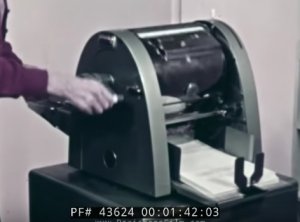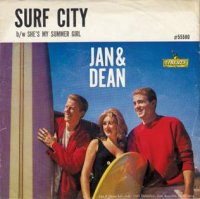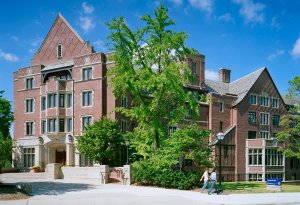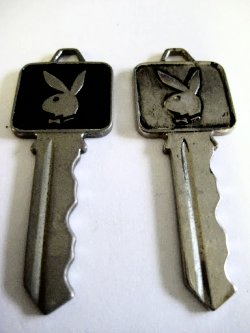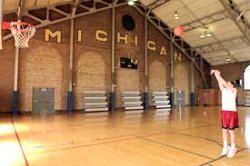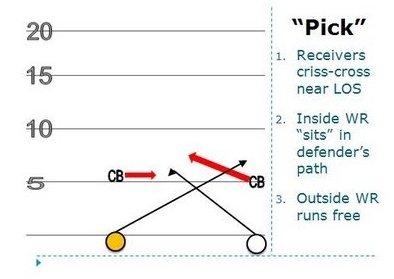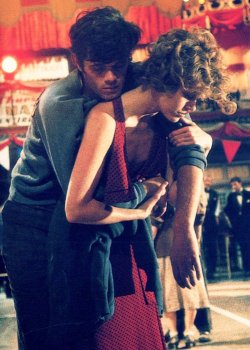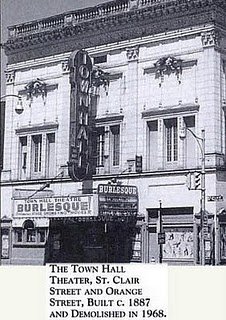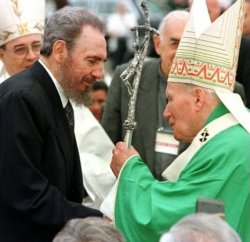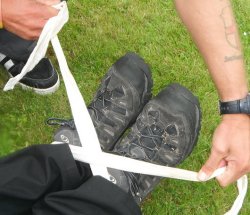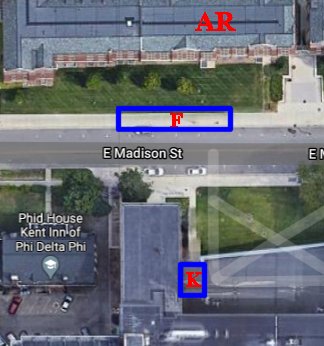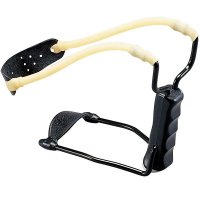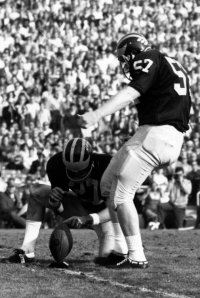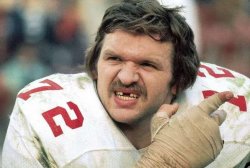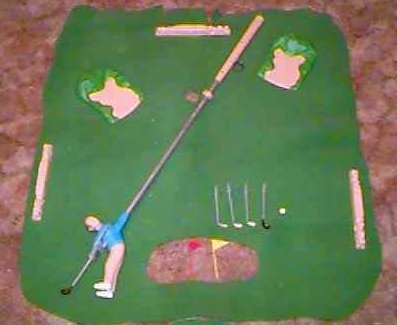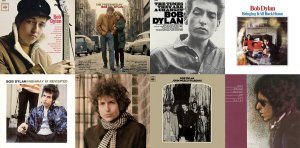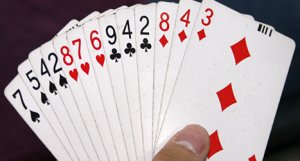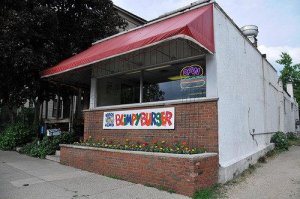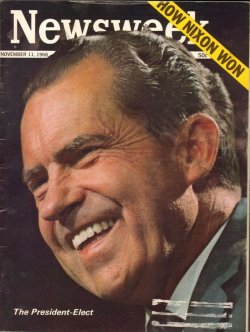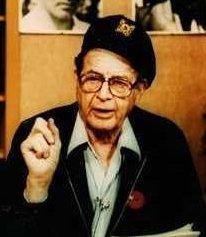The middle years in Allen Rumsey House. Continue reading
I remember reading somewhere that James Earl Jones lived in Allen Rumsey House when he was at U-M. I don’t know whether he enjoyed it, but it really suited me. I never considered moving out.
The House Council: I was asked to serve as secretary for the House Council fairly early in my freshman year. I let my creative juices flow when I composed my minutes for the weekly council meetings, which were held on Wednesday evenings (I think). I mimeograaphed fifty copies and put one under everyone’s door on Thursdays. Quite a few guys told me that they enjoyed reading the minutes.
Elections of officers at AR were held in the spring. Only guys who planned to return to the house in September were allowed to vote. Since I anticipated that debating at the varsity level in my sophomore year would take up a lot of my time, I decided not to run for secretary or any major office at the end of freshman year (1967).
However, I did volunteer for the position of editor of the house newsletter, Rumsey Roomers, which was published intermittently using the same mimeograph machine as the minutes. It had not been uncommon for years to go by between publications. I published at least three issues during sophomore year. I didn’t really “edit” the newsletter; I wrote every word, including both the questions and answers of the interview section, which was modeled after the Playboy interviews. I interviewed God in the last issue that year.
At the end of my sophomore year I decided that I had enough control over classes and debate that I could run for president, a role that I referred to as the Big Banana, or EBM (El Banano Magno, the Spanishish version). I ran against Ken Gluski, who resided on the fourth floor.
We actually held a “debate”. That is, I gave a little speech in the lounge, and then Ken did the same. I introduced a number of ideas that were pretty good, but, I must admit, most were not within the purview of the president. Ken’s remarks were vague.
I campaigned pretty hard. My slogan was “Bananas and noodles don’t mix.” Someone told me that gluski was the Polish word for noodles. I just checked on translate.google.com. The real Polish word is kluski. Close enough for rock and roll.
I mimeographed a one-page letter about the election and slipped copies under doors. John Dalby, the fourth-floor RA, complained that this was unfair. There was no rule against it, but Ken did not have a mimeograph machine in his office. I replied that Ken could use the mimeograph machine. I even volunteered to type up whatever he wrote. This mollified John, but Ken never responded to my offer.
I won the election, but not by as many votes as I had projected. I do not remember who the vice-president or secretary were. During junior year I worked a lot with the treasurer, Keith Hartwell, the social chairman, Roger Warren, and the athletic chairman, Mike Murphy.
Roger immediately went to work lining up a “sister house” for the next year. Traditionally the two houses together sponsor a few parties. He somehow persuaded the largest girl’s dorm, Stockwell House, which boasted over four hundred residents, to match up with us. This was better than “Surf City”.
In the fall of 1968 Roger scheduled a mixer with Stockwell. I didn’t go, but it was evidently a fiasco. Girls showed up and then quickly left. Fortunately, Roger had another function scheduled with them a day or two later—a beach party at a nearby lake. Very early the morning after the mixer I printed up flyers and taped them above the urinals in each bathroom. They said something like “Pissed? So am I! But come to the beach party. Nobody will be able to walk away early.”
The beach party was a big success. Even I attended, and I played a rubber or two of bridge with Celia Phelan, the president of Stockwell House.
The university was pressed that year to loosen its restrictions on visits by students of the opposite sex (there were only two in those days) in the dorms. A U-M administrator issued a notice that each house could design its own rules, but a process had to be established through which complaints by residents were processed. I worked on amendments to the house’s bylaws to put in place a rigorous process for handling complaints about our regulations. It was unanimously passed by the council. I then wrote a letter to the university administrator explaining our approach. The response came back rather quickly. Our application was approved by the administration, the first one that had ever been accepted even though we had implemented absolutely no restrictions on the presence of women in the house. I was astounded and very pleased. In those days I considered myself an anarchist.
At the same time the council made a few changes to the bylaws. One allowed people to run for the same office more than once. This was not my idea, but I took advantage of it.
For years AR had subscribed to Playboy magazine. The president retrieved the magazine from the house’s mail box and placed it in the lounge. One day the corporation sent “Allen Rumsey House” an invitation to join the Playboy Club in Detroit. We had to certify that we were at least 21 years of age. I wrote back that Allen Rumsey House was much older than 21, but few of the residents were. I asked for an honorary membership. They turned us down. I mean, come on. I was only asking for a lousy piece of paper.
In the spring semester a fair amount of money remained in the AR bank account. Someone (I don’t remember who) proposed that the House Council donate part of it to charity. He did a good job of describing the good works that the charity did. I voted to give it some money, but the motion was voted down.
Thinking that we must do something with our surplus, I met with Keith to determine as precisely as possible how much of the money would be available. I also asked Dave Zuk how much would be required to buy a good color television for the game room. We found a way to pay for the TV over three years, and that left us with about $500. I then proposed to the council that we buy the TV and pay a refund to all residents of $5 of their $20 dues. It passed unanimously.
This was a very popular move. People could not believe it when I handed them a $5 bill. Nobody ran against me in the presidential election in the spring of 1969.
The main issues in my senior year had to do with attempts by the university to turn the AR House Council officers into an unfunded police department. Some guys on one of the upper floors had done some mischief that led to damaged property. They may have thrown a water balloon that broke a window. The university sent a bill to West Quad. The West Quad Council wanted to send the bill to AR. I vigorously argued against this, which surprised everyone at the council meeting. If they had decided to do it, I would have ordered all of the money withdrawn from the bank and paid our bills in cash for the rest of the year.
By the way the new always-open visitation policy worked fine, as well as I could tell. Life was different, but the earth stayed in orbit. It turned out that surprisingly few members of the fair sex were all that eager to set foo in U-M’s oldest dorm. It probably did not help that the only ladies’ room in AR was in the lounge, which was nearly always occupied by nerds, a few of whom were capable of rude remarks.
I resigned as president early in the second semester of my senior year so that someone else could get some experience in the job. I do not recall who succeeded me.
The staff presented an award at the end of each year. It was named after a former resident who had donated the funds for a monetary award, which, as I recall, was $50 or $100. Roger won the award my junior year. They gave it to me in my senior year. Because I was a senior, I got no cash, but I did get to hear Jim (Gritty) Krogsrud refer to me as Mr. Allen Rumsey. That was nice.
Intramural sports: In my day the university conducted two sets of year-long intramural contests, one for the fraternity houses and one for the dorms. In the major sports they ran two leagues, A and B. The better players usually—but not always—played in A.
They may have also had competitions for women1 that I was unaware of, presumably pat-a-cake and hopscotch.
AR had never won the overall championship of the dormitory division before 1969-1970. The house’s athletic chairman that year was Mike Murphy. He was good at practically every imaginable sport, and he both played and encouraged others to play for the house. We ended up winning the overall title with the highest point total ever recorded.
I don’t think that the house’s A volleyball team lost a match in the four years that I resided there. We had a lot of good players who were 6’2″ or taller, and they started practicing together every September. In my senior year I was captain of the B volleyball team. We got to the finals, but we lost to Chicago House, a WQ rival, in a very close match. However, we were awarded the championship because the opponents used an ineligible player. Mike Murphy, who played on our A team, watched our match, recognized the ringer, and filed a successful appeal.
I was also a member of the team that won the B basketball championship, but I contributed little. I don’t think that we won the A championship, but we came close.
On one glorious day at the IM Building I dunked a basketball in warmups on a regulation 10′ basket. A number of people witnessed it. I had dunked volleyballs a few times, but this was the only time I managed to perform a real dunk.
I played significant roles in three team sports. A new event, slow-pitch softball, was held very early in the school year. We did not even understand that it was an official event until we reached the finals of the tournament. I had been pitching every game. I was not a great pitcher, if there is such a thing, but I could consistently throw strikes. Unfortunately, in the final game I lost that ability in the fourth or fifth inning. John Dalby replaced me, and we ended up losing the game.
My contribution to the B (touch) football team’s success was also substantial. As had happened when I played in the eighth grade (documented here), opponents almost never covered me. I remember that on one occasion I had been so open in the end zone so often that when Jim Burton finally threw it to me, I felt like making a fair catch.
My real specialty, however, was the pick play. The diagram at right is fundamentally flawed. There is a very good chance that the blocker, if he stands and waits for the defender as it indicates, will often be flagged by the ref. This is clearly illegal.
The intended receiver should NOT slant across the middle; instead, he should take one or two steps downfield and then cut sharply across the middle. Meanwhile, the blocker should make a shoulder fake toward the sideline, and then cut toward the middle (actually toward the other defender) and quickly look back toward the quarterback and wave for the ball. Then, when he collides with the defender, it will not look like he intended to block him.
I was expert at both techniques. As a blocker, I never missed the block, and I never was flagged for picking. As a receiver, the ball was once a thrown a foot or so behind me. I reached back and batted the ball up. I then abruptly turned up field, snatched the ball, and ran for a touchdown. I swear that this actually happened.
The pick plays nearly always worked. I remember that on one occasion, however, we could not even try it. We were scheduled to play on wet artificial turf. The footing was worse than on glare ice. Every time that anyone tried to plant his foot, he ended up on his butt.
I remember our final game pretty well. I think that we played Adams House. I scored a touchdown early while the opponents were not covering me yet. We scored a couple more, and so did they. I think that we were ahead by four or five points in the closing seconds. The opponents had the ball; I was standing on the sidelines. One of their players broke free and scored a touchdown. They then lined up for the extra point and tried to run it in. Our defense stopped them, but so what?
I was surprised to see the guys on our team, exhausted as they were, celebrating in the end zone and on the sidelines. It turned out that the opposing team had NOT scored a touchdown. One of our guys had tagged the runner just short of the goal line. The defensive stop on the last play actually had secured the championship for us. I felt foolish for a second, and then I was more excited than anyone, especially for the guys who made that heroic defensive stand.
These team sports did not win the overall title for us. Mike Murphy tirelessly organized participation in every event in every sport. We won few events in either of the two track meets, but we came close to winning the overalls both indoors and out. We had participants in every weight category in wrestling. The only one we won was when two of our wrestlers met in the heavyweight final.
Towards the end of the year Mike reported that the university was interested in ideas for new IM sports. I suggested soccer and marathon dancing. I had just seen They Shoot Horses, Don’t They?.
U-M’s current IM web page is here. It appears to me that they no longer have a league for the residence halls. I wonder if any house ever broke our record for total points. It still stood in the late seventies.
Road Trip: In the sixties the drinking age in Michigan was 21. Most residents of AR were younger. In Ohio, however, one only had to be 18 to purchase 3.2 percent beer. In my freshman or sophomore year the House Council organized a bus trip to Toledo, which is only 54 miles south on US 23, on a Friday or Saturday evening. I was not interested in the beer, but I decided to go when I heard that the last stop would be at the Town Hall, a burlesque house. John “Raz” LaPrelle and Ken Nelson for sure attended. I don’t remember who else was among the twenty or thirty guys on the bus.
I went into one or two bars, mainly to listen to the music. I remember that one band had several horn players, which allowed them to play a few songs that I did not expect to hear.
I remember walking on the streets with guys who were bigger than I was and thinking “Gee, I bet we look really tough to people.”
In the end, however, I got bored and went to the Town Hall by myself while the other guys were still cruising bars. When I got there an X-rated film was being shown. All I remember is that the heroine was a natural redhead. Then a few live “dancers” did their stuff. Let’s just say that their best years were behind them. The star of the show, Ineda Mann, was much better.
It was a good experience, but it was never repeated. The Town Hall was razed in 1968. Even if the trip had been repeated, I would not have gone. Once was enough.
Presentations: A few times people from the outside offered to make a presentation to the residents. I have vivid recollections of two of them. The first occurred on a September evening just before the first football game. One of the assistant coaches came to the house with some game films from the previous year. He showed the films in the game room, and he supplied the play-by-play commentary. It was just the right combination of humor and insider information. It really got everyone psyched up about the upcoming season.
I did not enjoy the second one, which occurred a year or two later, at all. In fact, I got quite angry at the presenters, and I let them have it with both barrels. The two of them represented the John Birch Society. They made many outrageous claims. The one that really set me off was the accusation that Martin Luther King supported Communism. Their evidence was a photograph of him shaking hands with Fidel Castro. This was stupidest reasoning that I had ever heard, and I heard (and made) a lot of dumb arguments in my four years of debate.
I tried to locate on the Internet the photograph of MLK with Castro. There are a lot of photographs of Fidel with international figures and a lot of King with international figures, but I could not locate even one with the two of them together. I did find photographs of the Cuban leader with at three different popes. Nobody has ever been more strongly anti-Communist than Pope John Paul II, the man who was more responsible for the dissolution of the Soviet Bloc than anyone.
The guys were shocked at my reaction to this demagoguery. None of them had ever seen me angry. It only happens about once every ten years or so.
Other Pastimes: Perhaps the most emblematic of all of the events at AR was the shower party. The concept is simple. One member would suggest that another guy had done something so outrageous (not necessarily bad) that he deserved to be thrown into the nearest shower fully clothed. A voice vote would be taken, and democracy prevailed.
I was part of a few shower parties. Once a set of guys tried to throw me in the shower, and they finally gave up. It was not that I was strong—far from it. I simply pumped my knees. Some guys grabbed my arms and torso, but they never got me horizontal, and my very bony knees did some damage to a few faces.
I was a member of many shower party crews, mostly because my roommate, John Cruickshank, was the most frequent recipient. He was addicted to terrible puns. I guarantee that I never gave up on getting a guy in the shower. My specialty was ankles.
One day one of the guys sitting in the game room in the basement announced that no one could throw him in the challenge. Handing my glasses to someone, I replied that three of us could do it. I pointed to Ken Nelson and John “Raz” LaPrelle, who took up the challenge. I dove at his feet and pinned both of his ankles together. I held on for dear life. Ken and Raz got grips on his torso. It took a long time, maybe thirty minutes, but we got him out the game room door, up the stairs to the first floor, all the way down the hallway to the bathroom, through two doorways to the shower that someone else had turned on. We shoved him in.
The wet person was Peter Petty, who was 6’10” tall and weighed 350 pound. This was one of the four or five greatest accomplishments of my life.
In my era AR was famous for its water balloons. A few guys threw balloons out on the courtyard side, but the best hurling was towards the sidewalks on East Madison and South Quad. The primary advantage was the target-rich environment. Also, there were no doors on that side of our building, and it was not a bit obvious how to gain access to the house from the south side.
The two most distinguished practitioners of this art were Frank Bell and Ken Nelson. Their styles could not have been more different. Frank dealt in volume, careful targeting, and deadly accuracy. He bought balloons by the gross at the Blue Front2 party store on the corner of Packard and State Streets.
Frank’s favorite launching site was the first floor bathroom. He told me that his favorite target was a group of two or three females walking on the sidewalk who were engaged in conversation. His objective was to provoke the target into verbal outrage that did not spill over into a confrontation. He did not have a major-league arm, but he (with an unbelievable amount of practice) was able to loft the balloon considerably and make it land with uncanny accuracy at the targets feet. Immediately after launching he shut the window and listened for his payoff in screams and screeches. Facing a bank of 120 windows, no one caught unawares could possibly suspect that the source was at street level.
Ken was the guy whose arm was so strong that he beat out a major league pitcher (Jim Burton) for quarterback of the house’s A football team. His style was entirely different from Frank’s. He did not buy balloons in bulk as Frank did, but if he felt like flinging a few, someone would gladly supply the balloons just to be part of the event. He threw from the third or fourth floor. His heaves, which splattered in front of the door to South Quad were so epic that no one could possibly have guessed that they came from Allen Rumsey House. Unless they saw the balloon in flight—which almost never happened—the victims always looked up at the windows overhanging them in South Quad.
I never threw anything, but I considered the water balloons fun and, as the Hitchhiker’s Guide to the Galaxy says, “mostly harmless”. No one suffered anything worse than wet shoes and stockings. However, a couple of freshmen who lived on the third floor when I was a senior indulged in something that was a lot more dangerous.
They had a Wrist-Rocket, which is a slingshot that is affixed to the wrist in order to improve accuracy even when the elastic part is pulled back past one’s ear. These two guys occasionally used it to shoot beebees in the direction of South Quad.
One evening two guys from South Quad had their window open and were being unduly boisterous. One of the guys with the slingshot fired at their window. The beebee went through the window of the South Quad residents and reportedly broke a lamp in their room.
The two SQ guys were not run-of-the-mill students. They were two of the most famous people on campus, and both were big and powerful. Tim Killian was a lineman on the football team who was more famous for kicking field goals.3 His roomy, Dan Dierdorf, was the best offensive lineman in the country. He became a five-time all-pro for the St. Louis Cardinals. He stood 6’3″ and weighed 285 pounds. If you asked everyone on campus to name one person whom they would never want to anger, nearly everyone would select Dan Dierdorf. I know I would have, even before I saw him at close range.
The shot from the Wrist-Rocket set Dierdorf off. He charged across East Madison and stormed through the door to AR. The first thing that he saw was the lounge, where I and a bunch of other nerds were seated. I was probably playing bridge. We all recognized him immediately.
“Who here has a gun?” he demanded
I told him that no one in this house had a gun. This was true, but I was pretty sure of what might make a person think that someone did. He responded, “Someone shot a lamp out in my room, and they are going to pay for it.”
Someone else said, “There are no guns here.”
Dierdorf picked up a broom that was leaning against a corner. He nonchalantly snapped the broom’s handle in two in his hands. He had no need for a fulcrum. Our eyes got wider, and our hearts beat faster in anticipation of “flight or fight” mode. Believe me; no one was considering “fight”.
To our great relief he marched resolutely up the stairs with the broomstick piece in his hand. His bellowing continued, but he never actually did anything. Although the guys with the slingshot would not have won a popularity contest in AR, no one ratted them out. As usual in a group of guys, omertà prevailed, and there were no further incidents with the Wrist-Rocket.
There were lots of other diversions in the dorm: sockey (played in the corridor with a rolled up pair of socks), cans (also in the corridor with a frisbee and four coke cans—two stacked at each end), epic water wars between two floors that created waterfalls on the staircases, and Arnold Palmer’s Indoor golf Game in the lounge. The course was called Sunny Beach.
The golf game was really enjoyable until a guy whose name I don’t remember (and who was not even on any of the university’s athletic teams) decided to play with us one day. You could make the little Arnold figure swing by pulling on a circular ring located on the handle of a golf club that was attached to Arnold’s back. This guy had so much power in his trigger finger that he actually drove the green on a par five! Other guys could come close on a par four, but the par five hole was the entire length of the lounge. Reaching the green in two required two monstrous strokes for everyone else.
Someone brought the Diplomacy board game into the house. We spent a few days digesting the rules. Finally, we got together the requisite seven guys and set aside a weekend day to play.
There are no dice or anything else designed to bring randomness into the game. This game is all about making deals. The rules set a time limit on the bargaining sessions, but they are totally unrealistic. We agreed to ignore the time limits. After several hours someone violated a bargain that he made with another player and stabbed him in the back. The second or third time that it happened, the victim got extremely angry and quit.
We tried playing one more time, and essentially the same thing happened. We never managed to finish a game. I was fascinated with the game, and I bought it for myself. I was never able to gind seven people willing to commit a day to playing it. It survived several moves and has been sitting in the basement of our house for decades.
Of course, we also played cards. We played rubber bridge whenever we could find four willing players. Some games would go on for hours with players finding substitutes when they need to go somewhere. Usually the games were in the lounge, but occasionally we would play in my “suite”, which was right next door.
I have a pretty clear recollection of one monumental session in Room 109 that went on from about ten in the morning until well after supper. We only broke for meals. The stereo was playing one Bob Dylan record after another. When the stack was done, the dummy would flip it over.
My recollection is that throughout that entire session I only had one opening hand. I have subsequently played enough bridge to deduce that this claim is probably apocryphal, but I am quite sure that at some point I opened the window, stuck my head through it, and screamed to the heavens that I was sick of never getting any cards.
A few of us also played at least once in the sanctioned duplicate pairs game at the Michigan Union. By then we were playing Howard Schenken’s Big Club. We did pretty well, but we did not finish first.
Grub: For burgers there was only one choice, Krazy Jim’s Blimpy Burger with Krazy Ray on the grill and Krazy Jim taking orders. It was very close; we took a shortcut through a fence. It closed in 2013. A store with a very similar name opened downtown the next year.
Omega pizza, which was on the northeast side of central campus, had the best pizza when I was an undergraduate. It was a long walk, but we felt that it was worth it. If the weather was bad, which happened often, we ordered delivery from somewhere. There are references to Omega Pizza on the Internet, but I think that they have moved or gone out of business.
In the sixties there was a small shop on State Street that made outstanding hot submarine sandwiches. It was gone by the time that I returned in 1974.
Miscellaneous: I was naughty at least once. Newsweek magazine somehow got addresses for everyone in the dorms at U-M. They sent postcards offering discounted subscriptions. To get one, all you had to do was put a checkmark in a and mail the postcard back to them. There might have been a place for a signature.
The postcards must have arrived at West Quad in one big stack with a rubber band around it. Instead of distributing them to the individual boxes of the addressees, the mail person just put them out on a table with a sheet of paper telling people to take them if interested.
One evening when no one was around I picked up the stack of cards and dropped them in a mailbox. I then did the same with the ones at East Quad and South Quad.
Newsweek evidently did not check to see if the boxes were checked, and no one there was surprised that so many were returned at once from one location. Everybody in the dorms got a few free issues of the magazine and then an unwanted bill. A few people were upset for a little while, but it soon blew over. Nobody knew that I did this until decades later.
I went to mass every Sunday at St. Mary’s, the parish associated with the Newman Center. I liked the music that they sang, especially the pieces written and led by Bob Franke. Eventually he moved over to the Episcopal church.
I attended at least two performances at The Ark, a “coffee house” associated with the Episcopal Church. One was to hear Franke. The other was when Ramblin’ Jack Elliott came to town. His concert was fantastic. He sang “Me and Bobby McGee” twice because he was dissatisfied with his first rendition. This was before Janis Joplin released her version. I bought one of Jack’s albums, but I was disappointed with it. He was much better in person.
Both Bob and Jack are still alive in 2020, and they both still perform regularly.
One of the local bands really impressed me. They changed their name from The Long Island Sound to Fox and then to something else. I loved their song “I Want to be a Cowboy.” Dave Nemerovski, a resident of AR, was related to one of the members.
I did not watch a lot of television. One show that filled the TV room every week was Mission Impossible. A group of us would count the words uttered by Willie Armitage, the strong man. I think that the record was thirteen. I liked Mr. Riggs better than Mr. Phelps.
Bill Kennedy at the Movies was on every day. I would pop down if Bill was showing a Bogey movie or one with Gary Cooper, the Marx Brothers, or W.C. Fields. One day I was astounded to watch The Story of Mankind, the strangest movie (with the most amazing cast) ever made. On another occasion I watched The Pad and How to Use It4, a bittersweet movie that sparked my interest in opera.
Several of us were big fans of Walter Brennan, who won three of the first five Oscars for Best Supporting Actor. He had a fairly popular Western called The Guns of Will Sonnett. Walter and his grandson rode around looking for the kid’s father, a famous gunfighter named Jim Sonnett. When people asked how fast he was, Walter would say, “He’s fast, but the boy here is faster, and I’m faster than the both of them. No brag, just fact.”
I wrote to Walter Brennan to wish him luck in finding his son and to ask for an autographed picture. He sent it, and I put it in the AR trophy case. It was still there in the middle seventies.
Saturday morning was often devoted to watching cartoons. I know that we watched “George of the Jungle” and “Rocky and Bullwinkle” in reruns.
One of our favorite shows was a live-action kids show called “The Banana Splits Adventure Hour”. It featured four performers in bizarre animal costumes. Bingo was a gorilla, Fleegle a dog, Drooper a lion, and Snorky an elephant. They were also a rock-and-roll band that spent a lot of time in amusement parks.
Each Split had a very distinct personality. All of them could talk except Snorky, who only honked. My favorite was Drooper, who was played by Anne W. Withrow. Drooper had a long tail, which apparently got in the way sometimes. When she wasn’t pretending to play the bass guitar, Anne usually carried the tail in her left hand. All the rest of the performers were guys. Of course, the costumes meant that you could not tell.
Occasionally they would do some jokes that were very unusual for a kid’s show. I remember that once they asked how to get a miniature poodle to pull a dog sled faster. The answer was “Get a bigger whip.”
We all sang along to the Banana Splits song. I still can recite the lyrics, which you can read here. The third verse (“Two banana, four banana, …”) was not sung on the show. It was added for the non-hit single.
The late sixties was not a good era for cinema. There were no multiplexes within walking distance, but two very large theaters bordered the campus. A few smaller theaters showed foreign films. I saw three movies that I really liked: Antonioni’s Blow-Up, Midnight Cowboy, and (my favorite) Z. At the end of Z everyone in the theater loudly applauded. I had never heard a single person applaud at the end of any other flick that I had seen. You know that they can’t hear you, right?
Fred LaBour was one year behind me at U-M. He worked at the Michigan Daily. On October 14, 1969. the Daily, which was (and presumably still is) read by nearly all students, published an article written by Fred and John Gray that confirmed the conspiracy theory that Paul McCartney was dead. Their evidence was mostly in songs recorded by the Beatles, but it could only be heard if you played them backwards. Many students did, including some in AR. Adding to the mindless speculation was a lot of fun, but nobody whom I knew took it seriously.
The Daily also published a gigantic crossword puzzle, and offered a prize to the best solution submitted. AR’s team, which included me, finished second or third. I think that we missed the three-letter word for a college in Benton Harbor. We got to go to a party full of journalism nerds. It was the only party that I attended other than the AR-Stockwell beach party in my four undergraduate years. That is also where I drank the only beer that I consumed as an undergraduate.
Some alcohol was consumed in AR and, especially in the last year or so, some marijuana. I never smoked any, but occasionally you could smell it in the hallway. However, it was in no way comparable to what was around me every day when I was in the army in Albuquerque. I wrote about those amazing days here.
1. Women were not allowed to be cheerleaders (!) or band members when I came to Michigan in 1966. The cheerleaders were male gymnasts and members of the trampoline team. In my four undergraduate years I never heard any mention of sports for women. Title IX was not passed until 1972. There may well have been no varsity sports for women when I was at U-M. Prior to 1956 women could only enter the Michigan Union, where President Kennedy gave a speech in1960, if they were escorted by a man. Even so, they had to use the side door. The Billiards Room in the Union was closed to women until 1968. People at the time considered U-M a very liberal university.
2. Inside and out, it seemed like a relic in 1966, but it did not go out of business until fifty-three years later. They even sold magazines for nudist colonists! New owners reopened it as a craft beer and wine store a few months later in 2019.
3. Tim Killian’s most valuable contribution to the university might have been the fact that he removed more than half of the entries in the U-M football record book. On October 26, 1968, I watched him kick three field goals in the 33-20 victory over Minnesota in Michigan Stadium. This broke the previous record of one, shared by everyone who had ever kicked a field goal in Michigan’s storied football history.
4. The Pad appears to have disappeared. You can’t buy a copy in any format, and it is never on television. I would really like to see it again.

